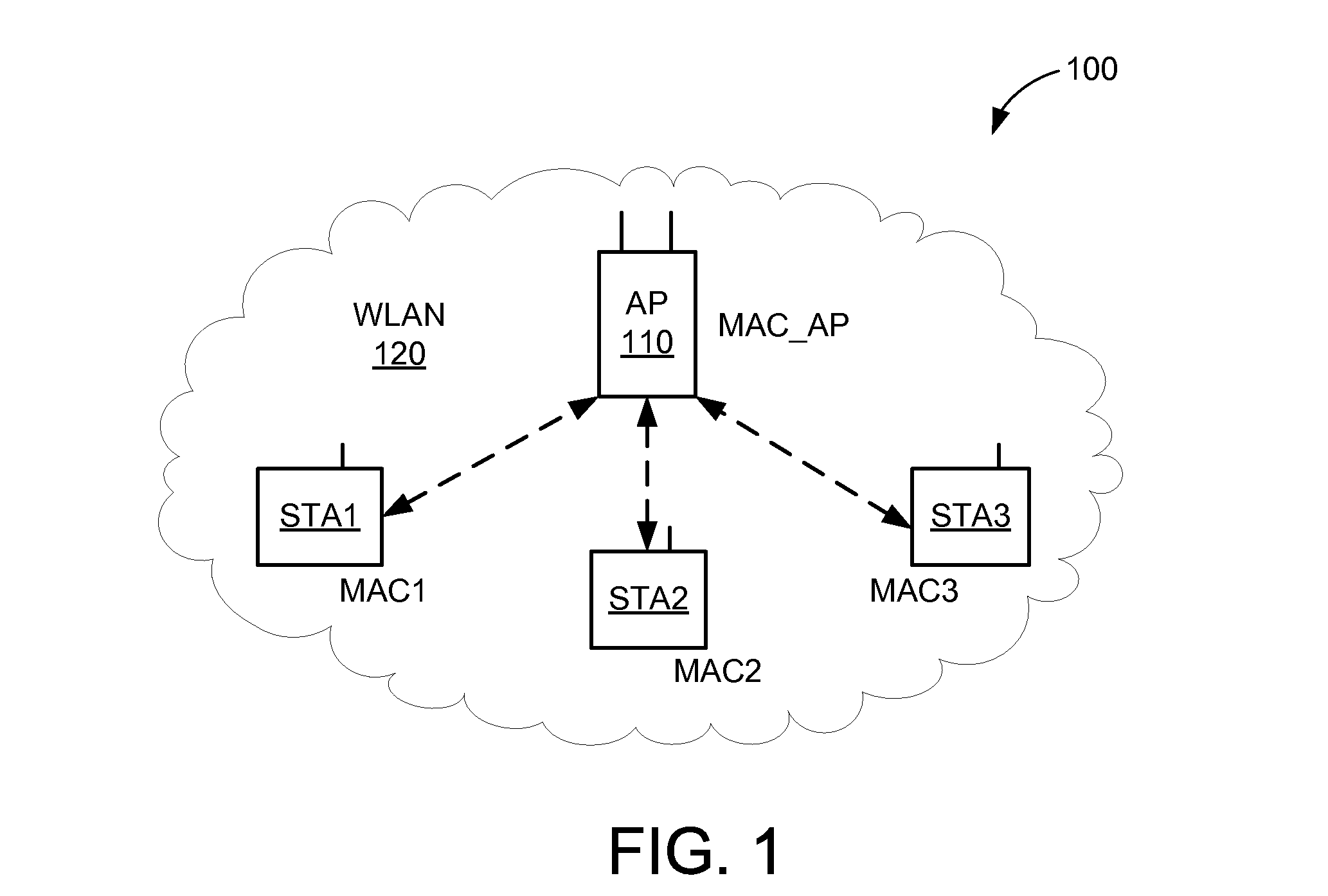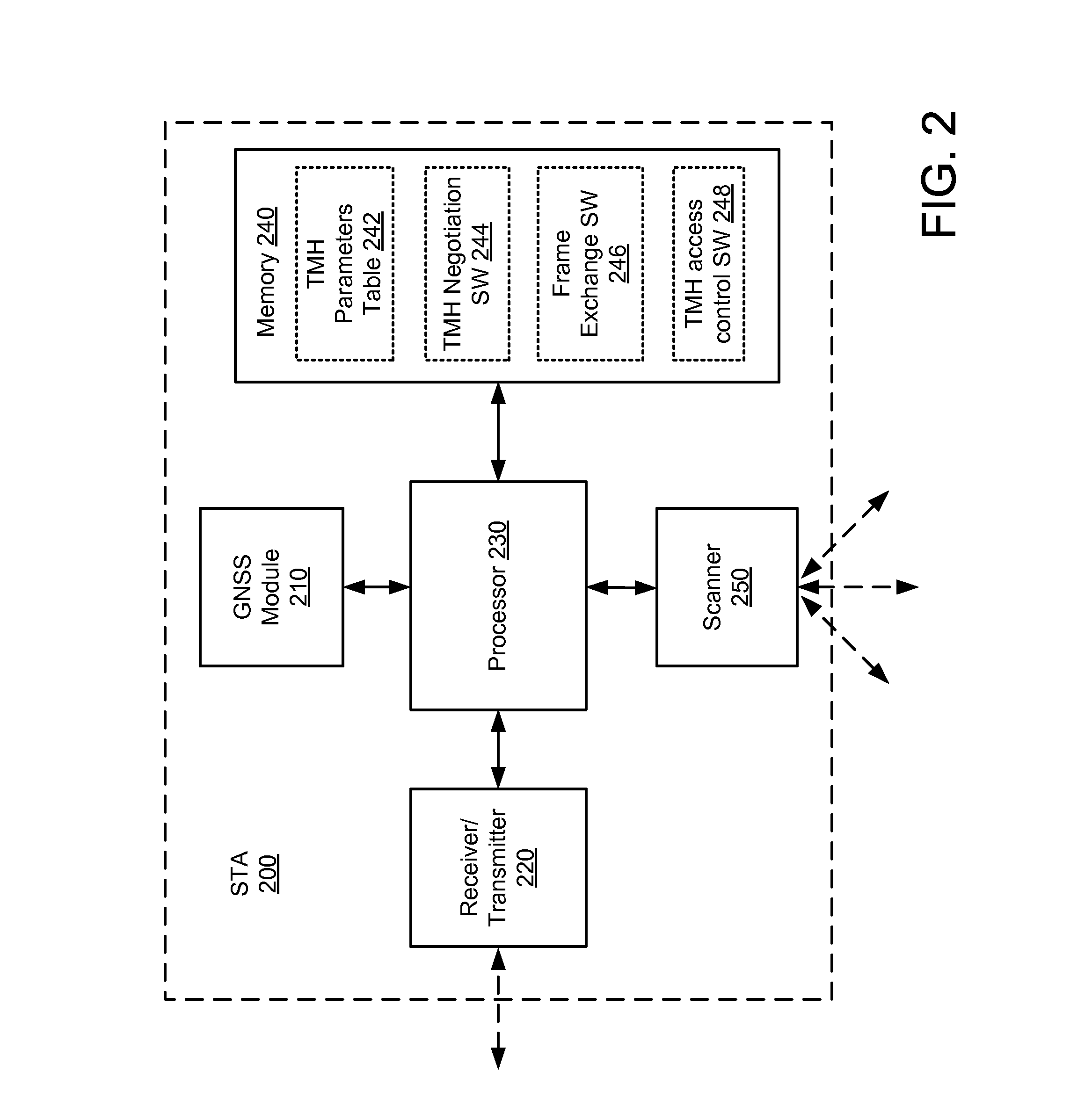Temporary medium handover
a technology of temporary medium and wireless medium, applied in the field of wireless networks, can solve the problems of reducing the overall throughput of the medium, unable to receive data transmitted by other devices, and unable to meet the needs of users, and achieve the effect of increasing the throughput of the shared wireless medium
- Summary
- Abstract
- Description
- Claims
- Application Information
AI Technical Summary
Benefits of technology
Problems solved by technology
Method used
Image
Examples
Embodiment Construction
[0024]The present embodiments are described below in the context of data exchanges between Wi-Fi enabled devices for simplicity only. It is to be understood that the present embodiments are equally applicable to data exchanges using signals of other various wireless standards or protocols, as well as for data exchanges using signals of one or more wired standards or protocols (e.g., Ethernet and / or HomePlug / PLC standards). As used herein, the terms WLAN and Wi-Fi can include communications governed by the IEEE 802.11 family of standards, Bluetooth, HiperLAN (a set of wireless standards, comparable to the IEEE 802.11 standards, used primarily in Europe), and other technologies having relatively short radio propagation range. In addition, although described above in terms of a wireless communication medium, the present embodiments may be applied to wired communication mediums (e.g., fiber optic cables, twisted pair cable, co-axial cable, and so on). Thus, as used herein, the term “med...
PUM
 Login to View More
Login to View More Abstract
Description
Claims
Application Information
 Login to View More
Login to View More - R&D
- Intellectual Property
- Life Sciences
- Materials
- Tech Scout
- Unparalleled Data Quality
- Higher Quality Content
- 60% Fewer Hallucinations
Browse by: Latest US Patents, China's latest patents, Technical Efficacy Thesaurus, Application Domain, Technology Topic, Popular Technical Reports.
© 2025 PatSnap. All rights reserved.Legal|Privacy policy|Modern Slavery Act Transparency Statement|Sitemap|About US| Contact US: help@patsnap.com



